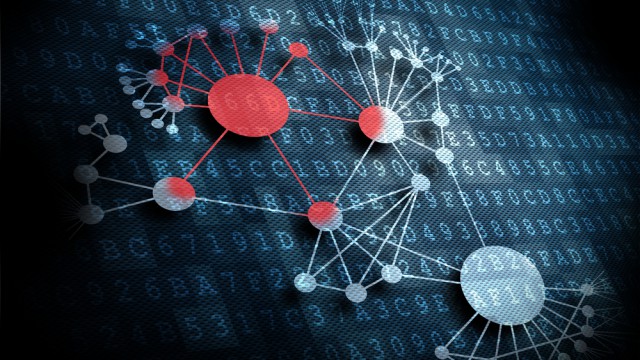
Rebuilding trust between developers and security [Q&A]
The demands of modern business IT environments can often lead to friction between developers and security teams which can hamper the successful rollout of cloud security.
Developers want to deliver features as fast as possible and security teams want things to be as secure as possible, so there is constant conflict of interest. We spoke to David Hendri, CTO and co-founder of cloud security startup Solvo, to discover how to rebuild the trust between developers and security by creating a common language.

The missing piece in the MSP data security puzzle
In the dynamic world of Managed Service Providers (MSPs), it has become quite evident that the time has come for next generation Data Security Solutions, and that such a solution should be added to your technology stack.
For some time and becoming ever more frequent today, organizations and MSPs are facing major data security challenges that are likely to increase exponentially over the coming decade.

Look back and look forward when walking into a new MDR relationship
The managed services market is bringing more and more providers into the mix, as an increasing number of organizations decide it makes fiscal and operational sense to outsource key functions, even those which traditionally have been considered especially critical, such as certain information security-oriented tasks. Perhaps the fastest-growing segment of service providers in this space is MDR -- managed detection and response.
The MDR concept is relatively young in the service provider space. MDR offerings are typically designed to augment your SOC (security operations center) function by providing detective and reactive tools and expertise. In some cases, it may even replace your tier one, or triage-level, security analysts, who are focused on reviewing and confirming the sometimes overwhelming flood of incoming security alerts.

Service mesh and the CISO [Q&A]
The number of use cases for Kubernetes is expanding as an increasing number of enterprises across a wide array of industries are adopting it as their platform of choice. However, this also expands the enterprise attack surface and business risk as a result.
We spoke to William, Morgan CEO of Buoyant, about how CISOs are coming face-to-face with the insecurity that can arise from managing Kubernetes platforms. They are beginning to see the risks that can unfold as well as how a service mesh can support a security stack.

LastPass data breach is worse than first thought; user data and password vaults grabbed by hackers
Password management firm LastPass has issued an update about a security breach that was first revealed back in August. The news is not good; the data breach is significantly worse than initial reports suggested.
LastPass says that its investigations into the incident now show that the hackers were able to obtain customer vault data. The company points out that these vaults are home to both encrypted and unencrypted data, and tries to play down the significance of a threat actor gaining access to unencrypted data.

Cyberattacks, standards and the 'door dash' -- eCommerce predictions for 2023
The past couple of years have seen a boom in eCommerce as more people have worked -- and shopped -- from home.
But as the industry's profile has grown so has the risk of cyberattacks. What’s also been thrown into sharp focus is that delivery systems sometimes don't live up to the buying experience. So how will the eCommerce sector address these things in 2023? Here's what some industry experts think.

How our outlook on cybersecurity will change in 2023
It’s fair to say over the last year cybersecurity has become one of the hottest topics to discuss. We have seen the issue affect every possible area of life from healthcare and energy to multinational corporations, and even conflicts such as the Russia/Ukraine War.
As a result, cybersecurity (in some shape or form) is in the minds of nearly all major stakeholders, board members and leadership teams across the world. Research by IDC highlighted that European IT security spending will surpass $66 billion in 2026.

Security teams expect higher costs and greater workloads next year
New research from Deepwatch shows 78 percent of security professionals expect breach and incident reporting requirements to create more work for their teams, and 77 percent expect increased work arising from privacy requirements.
The SecOps pulse survey shows digital transformation initiatives and regulatory requirements are the top two cost drivers expected for next year.

More automation, zero trust and complex attacks -- enterprise security predictions for 2023
Over the past couple of years enterprise security teams have faced a number of challenges, not least the shift to more remote and hybrid working.
This has driven forward plans to adopt automation and technologies like zero trust. So, what changes can we expect to see as we move forward into 2023?

Why proactive protection is key to effective cybersecurity
Compared to many industries, cybersecurity operates in a highly adversarial environment, with organizations investing huge levels of time, money and resources into defeating a range of determined threat actors. If that weren't enough, security teams are pitted against highly motivated, well-organized criminal and nation-state groups who constantly shift tactics to gain the upper hand.
The result is that security teams are frequently inundated with alerts, false positives and negatives, which nevertheless, they are compelled to address rather than being allowed to concentrate on proactively securing their networks.

Is your cybersecurity wrapped up for the holidays?
New research published in November revealed that the severity of inbound cyberthreats increased during holiday months.
The findings, from our Barracuda XDR team' Global Security Operations Center, suggest that cyberattackers may take advantage of IT security professionals being away from the workplace to launch more complex, higher risk attacks -- possibly in the hope that understaffed security departments are less likely to be monitoring the network for threats or equipped to deal with any crisis.

Keeping attackers out of the 'atomized network' [Q&A]
As the network as we know it has changed and adversaries are finding success with new attack routes that exploit gaps in defenses.
As enterprise security undergoes a major shift we need to change the way we think about this complex 'atomized network'. We spoke to Martin Roesch, CEO of Netography, to find out about the challenges this presents and how to address them.

A hybrid approach and risks to security -- quantum computing predictions for 2023
Quantum computing holds the promise of much faster processing speeds but is still widely viewed as still being some way in the future as a commercial proposition. It could boost machine learning and AI, and unlock the power of unstructured data.
Of course quantum also comes with security challenges thanks to its potential to crack passwords and break encryption. Here's what industry experts expect to see happening in the quantum world in 2023.

Apple fixes Gatekeeper-bypass vulnerability after Microsoft discovers macOS security flaw
A Microsoft security researcher has unearthed a security vulnerability in macOS which has been named Achilles.
Tracked as CVE-2022-42821, Jonathan Bar Or found that the flaw could be used to bypass the Gatekeeper security feature of macOS in order to execute malicious apps. Apple has now fixed the vulnerability in Big Sur, Monterey and Ventura versions of macOS.

No more either/or: How a layered, data-centric approach to security removes outdated restrictions
Viewing security as a modern data challenge is something different from simply recognizing the crucial role of data. IT security has always been about gathering, analyzing and acting on data. But modern cloud data challenges are about handling ever increasing amounts of disparate, differently-structured and unstructured data, from a changing mix of dynamic sources.
The challenge is not about battling to handle data overload. But rather, rethinking the underlying data technologies you use at the core of your security platform, so that as more data floods in, it makes your security tighter and more effective.
